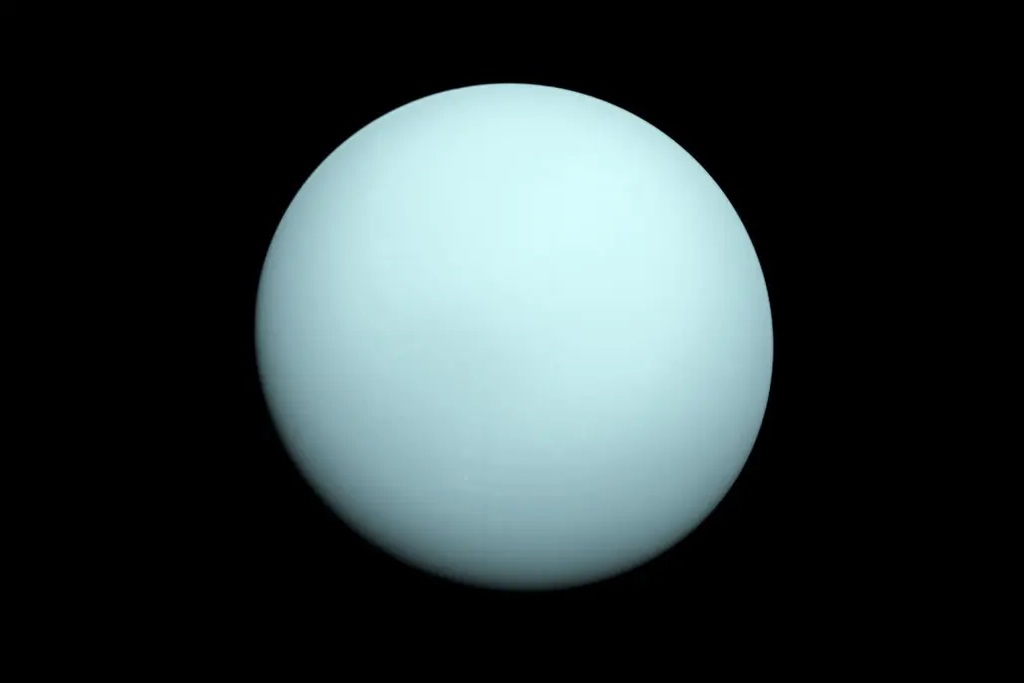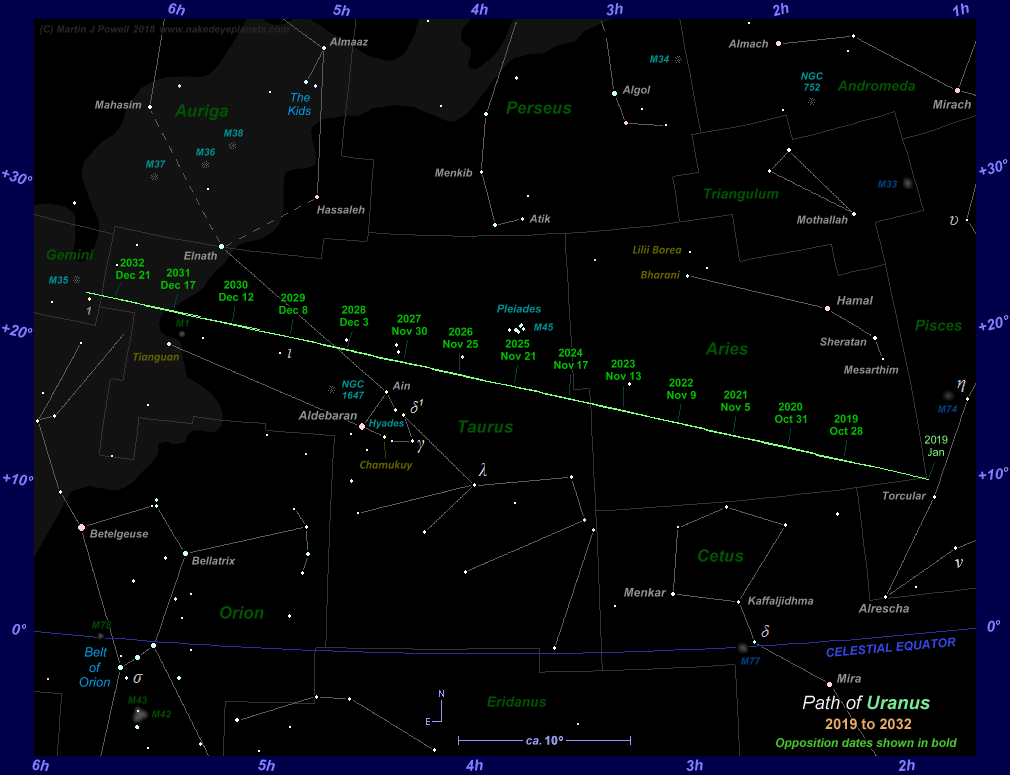The series of oppositions between the great planets, which began this year with Saturn, will end on November 13: on this day, Uranus will be closest to the antisolar point of the celestial sphere. The conditions for observing it at this time will be the best, in a dark, clear sky with no Moon and no artificial light, you have chances to see it with the naked eye.
Currently, Uranus is in a part of its orbit that is farther from the Sun, but it is gradually approaching its perihelion, which will take place in 2051. Until then, with each successive opposition, it will come closer to the Earth and become a little brighter. While at the farthest oppositions, this planet is just barely visible to the naked eye, at the closest oppositions it is quite easy to see. That’s why some astronomical historians are surprised that it was discovered as much as 172 years after Galileo Galilei first looked at the sky through his telescope. This year, Uranus will come closest to us on the morning of November 13 (at a distance of 18.631 AU, or 2 billion 787 million km). Its brightness will reach 5.6ᵐ. It will move through the constellation Aries, 18° north of the celestial equator, so the conditions for observing the planet at Kyiv’s latitude will be quite favorable.

In large cities, as already mentioned, it is impossible to find Uranus with the naked eye – you need to “arm yourself” with at least a small pair of binoculars or a telescope. The planet’s disk can be seen at a magnification of more than 60 times (although instruments with a lens diameter of at least 30 cm are required to see the Uranian satellites). Its search in the sky will be greatly facilitated by bright Jupiter, which passed through an opposition just 10 days earlier: it will be located 12° west, i.e. to the right. And 10° northeast of Uranus will shine the remarkable Pleiades star cluster, one of the main decorations of the constellation Taurus.

Next year, Jupiter will complete the annual sequence of confrontations between the major planets, and then Uranus will have the honor until 2031. At that time, it will move further away from the celestial equator toward the north pole of the celestial sphere, and the conditions for observing it in Ukraine will be optimal.
Earlier, we wrote about how the James Webb Space Telescope took pictures of Uranus’ rings.
